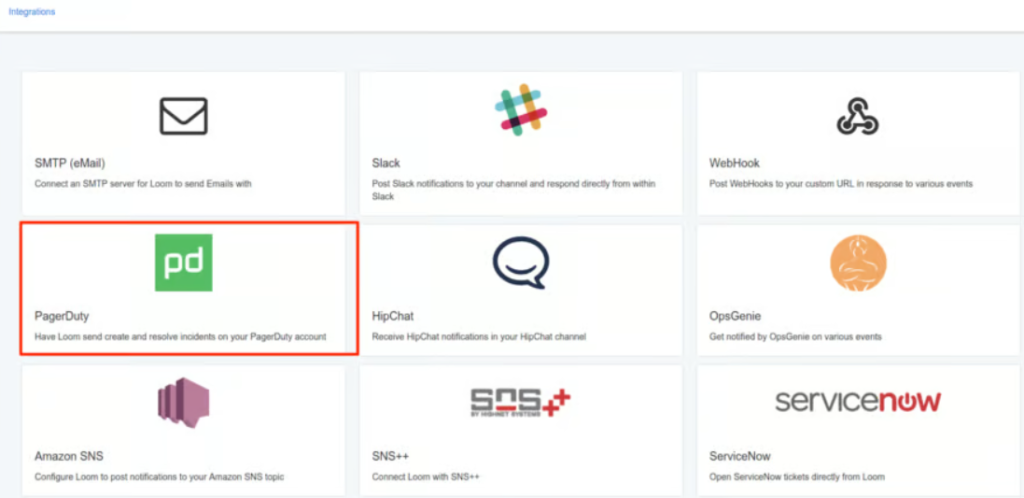
The increasing complexity of IT systems and the growing volume of data generated by modern applications require innovative solutions for managing and analyzing IT operations. Loom Systems is an AIOps (Artificial Intelligence for IT Operations) platform designed to help organizations harness the power of AI to predict, prevent, and resolve issues in real time. By analyzing structured and unstructured data, Loom Systems delivers actionable insights that enhance operational efficiency and minimize downtime.
As a pioneering AIOps solution, Loom Systems integrates seamlessly with IT ecosystems, offering end-to-end visibility into operations. Its predictive capabilities and user-friendly interface make it an indispensable tool for IT teams aiming to stay ahead in the digital transformation journey.
What is Loom Systems?
Loom Systems is an AIOps platform that leverages artificial intelligence and machine learning to analyze IT logs and metrics. It offers a proactive approach to incident management by predicting issues before they impact users and providing actionable recommendations for resolution.
Unlike traditional monitoring tools, Loom Systems processes unstructured data, such as logs and events, alongside structured metrics, enabling comprehensive insights into IT environments. With its AI-driven automation, it reduces manual effort and accelerates incident response, making it a valuable asset for modern IT operations.
Top 10 Use Cases of Loom Systems
- Predictive Maintenance
Detect potential issues in IT systems before they escalate into major problems, ensuring seamless operations. - Incident Prevention
Analyze patterns in logs and metrics to identify and address root causes of recurring issues proactively. - Anomaly Detection
Automatically identify deviations from normal behavior in real time, enabling quick action to prevent disruptions. - Log Analysis
Process and analyze vast amounts of log data to uncover hidden insights and trends that traditional tools may miss. - IT Service Management (ITSM) Integration
Enhance ITSM workflows by integrating Loom Systems with platforms like ServiceNow to automate ticketing and incident resolution. - Cloud Monitoring
Provide real-time monitoring and analysis of cloud environments, ensuring optimal performance and reliability. - Application Performance Monitoring (APM)
Monitor application logs and metrics to optimize performance and ensure a smooth user experience. - Root Cause Analysis
Use AI to identify the underlying cause of incidents, reducing time spent on troubleshooting. - Security Event Monitoring
Analyze security logs for anomalies or potential threats, enhancing IT security posture. - DevOps Pipeline Optimization
Monitor and analyze logs from CI/CD pipelines to improve build and deployment processes.
What Are the Features of Loom Systems?
- AI-Powered Insights
Use machine learning algorithms to analyze IT data and generate actionable insights for preventing incidents. - Proactive Alerts
Notify teams about potential issues before they impact system performance or availability. - Real-Time Anomaly Detection
Detect unusual behavior in logs, metrics, and events as they occur, ensuring faster response times. - Unified Data Analysis
Combine structured metrics and unstructured log data for comprehensive operational insights. - Root Cause Analysis
Automatically identify and suggest resolutions for the root causes of incidents, reducing downtime. - Integration Ecosystem
Seamlessly integrate with ITSM platforms, cloud providers, and monitoring tools for unified operations. - Customizable Dashboards
Create visualizations and dashboards tailored to your team’s needs, enabling better decision-making. - Automation
Automate workflows for incident resolution, ticket creation, and escalation, reducing manual intervention. - Self-Service Analytics
Enable non-technical users to query and analyze IT data without requiring extensive expertise. - Scalability
Handle large volumes of data from diverse sources, making it suitable for enterprises with complex environments.
How Loom Systems Works and Architecture
How It Works:
Loom Systems collects data from logs, metrics, and other IT sources, applies AI algorithms to analyze the data, and generates insights to predict and resolve issues. Its architecture is designed to process both structured and unstructured data, ensuring comprehensive coverage of IT environments.
Architecture Overview:
- Data Ingestion Layer: Collects logs, metrics, and events from various sources, including cloud platforms, on-premises systems, and applications.
- AI Engine: Processes the data using machine learning algorithms to detect anomalies, correlate events, and identify root causes.
- Incident Management Layer: Provides recommendations, alerts, and automated workflows for incident resolution.
- User Interface: Offers intuitive dashboards and visualizations for monitoring and analyzing system health.
- Integration Layer: Connects with third-party tools for ticketing, monitoring, and collaboration.
How to Install Loom Systems
Steps to Install Loom Systems:
- Sign Up: Create an account on the Loom Systems platform or contact their sales team for enterprise plans.
- Data Source Configuration: Connect Loom Systems to your data sources, such as log files, metrics, and cloud platforms.
- Integration Setup: Integrate with ITSM platforms like ServiceNow or monitoring tools like Nagios.
- Define Rules: Set up rules for alerts, thresholds, and anomaly detection based on your IT environment.
- Test and Deploy: Run test scenarios to ensure configurations are accurate before deploying the platform in production.
Deployment Options:
Loom Systems is available as a cloud-based solution, providing quick setup and scalability without the need for on-premises infrastructure.
Basic Tutorials of Loom Systems: Getting Started
- Connecting Data Sources
Start by configuring Loom Systems to ingest data from logs, metrics, and event sources. Use the integration library to simplify the process. - Setting Up Alerts
Define alerting rules and thresholds to receive notifications for anomalies and potential issues. - Customizing Dashboards
Create personalized dashboards to visualize system health, incidents, and performance trends in real-time. - Analyzing Logs and Metrics
Use the AI engine to analyze logs and metrics, uncovering patterns and root causes of incidents. - Automating Workflows
Set up automated workflows for incident escalation, ticket creation, and resolution to improve operational efficiency. - Integrating with ITSM Platforms
Connect Loom Systems with ITSM tools like ServiceNow to streamline incident management and enhance collaboration.